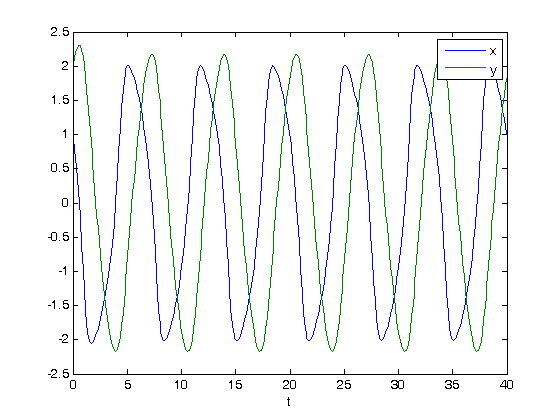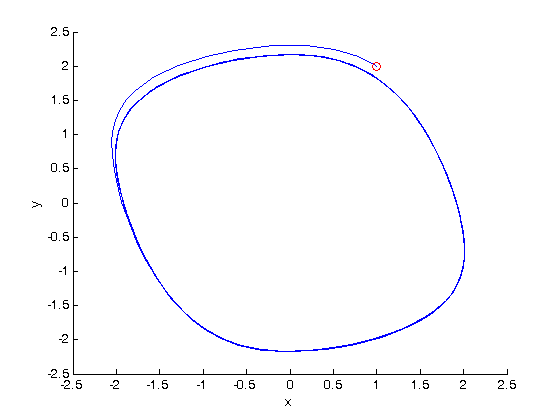solving a second order ode
September 26, 2011 at 11:02 PM | categories: odes | View Comments
solving a second order ode
the Van der Pol oscillator Matlab can only solve first order ODEs, or systems of first order ODES. To solve a second order ODE, we must convert it by changes of variables to a system of first order ODES. We consider the Van der Pol oscillator here:
Contents

 is a constant. If we let
is a constant. If we let  http://en.wikipedia.org/wiki/Van_der_Pol_oscillator, then we arrive at this set of equations:
http://en.wikipedia.org/wiki/Van_der_Pol_oscillator, then we arrive at this set of equations:


here is how we solve this set of equations. Let  .
.
function main
X0 = [1;2]; tspan = [0 40]; [t,X] = ode45(@VanderPol, tspan, X0); x = X(:,1); y = X(:,2); plot(t,x,t,y) xlabel('t') legend 'x' 'y'

phase portrait
it is common to create a phase portrait. Although the solution appears periodic above, here you can see a limit cycle is definitely approached after the initial transient behavior. We mark the starting point with a red circle.
figure hold on plot(x,y) plot(x(1),y(1),'ro') % starting point for reference xlabel('x') ylabel('y')

'done'
ans = done
function dXdt = VanderPol(t,X) x = X(1); y = X(2); mu = 1; dxdt = mu*(x-1/3*x^3-y); dydt = x/mu; dXdt = [dxdt; dydt]; % categories: ODEs % tags: math